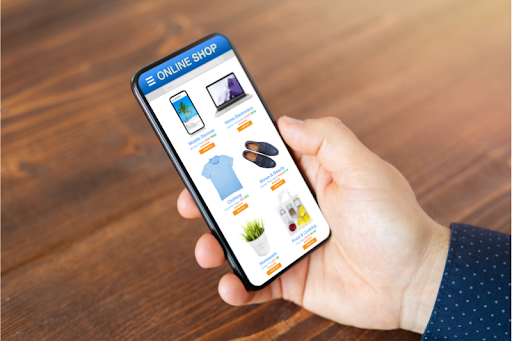
In an increasingly crowded and competitive online retail marketplace, ecommerce businesses must leverage creative marketing and optimization strategies distinguishing their brand, engaging customers emotionally and solving pain points seamlessly if hoping to thrive long term.
This guide examines 10 advanced techniques that set successful ecommerce brands apart – from personalized behavioral email campaigns to immersive shopping experiences using Web3. Apply these cutting-edge growth strategies now, elevating your ecommerce venture to the next level.
1. Leverage Personalized Behavioral Email Marketing
Email marketing represents one of the highest-returning sales channels for ecommerce. However, avoiding emails going to spam in Gmail rather than inboxes comes first. Then, personalized behavioral email content keeps subscribers opening and responding.
-
Segment Audience Groups
Divide customers into groups like first-time buyers, repeat purchasers, abandoned carts, and subscribers who are opening but not clicking. Send targeted emails aligned to their buyer stage.
-
Personalize Content Dynamically
Customize product recommendations, special offers and email content using merge tags, inserting subscriber names, browse history and cart data to feel relevant.
-
Schedule Trigger Emails
Set automated emails to send when customers complete specific actions, such as signing up or making purchases. This will engage customers appropriately at different times.
-
Boost Deliverability Protecting Reputation
Avoid spam filters by establishing sending reputations first, list washing using services routinely confirming IP warm-up, and completing best email deliverability tools practices.
2. Take an Experiential Approach to Shopping
Retail evolves exponentially. Take cues from disruptive brands, introducing creative experiences where shopping becomes an engaging adventure.
-
Launch AR Immersive Stores
The Ikea Place app allows visual viewing of true-scale 3D furniture models inside homes using augmented reality. Smart mirrors in Walmart changing rooms become virtual closets. Speculative futures arrive quicker than expected!
-
Open High-Tech Concept Stores
Lead generation driver Flagship City offers immersive education centers with interactive cooking classes or online personal shopping lounges assisted by digital experts remotely closing sales without onsite inventory.
-
Sell Web3 Virtual Products
Brands like Nike now validate virtual product authenticity ownership via blockchain ledgers. Limited edition virtual sneakers sell for thousands, transforming ecommerce concepts further. Much web3 potential awaits still.
3. Optimize UX Driving Conversions
Even creative digital concepts require solid UX foundations that simultaneously fulfill customer needs and business revenue goals. Audit site performance.
-
Simplify Checkouts
Instill trust instantly, removing unnecessary checkout fields to reduce cart abandonment. Guest options keep registration-optional. Remember Amazon’s patented 1-click buying innovation advantages.
-
Reduce Bounce Rates
Many prospects leave pages quickly, finding irrelevant content or complex site navigation. Analyze analytics to identify drop-off pages losing traffic, then rework messaging focus and simplify flows to meet audience expectations landing initially.
-
Test Page Speed Relentlessly
Google prioritizes faster mobile sites now. Optimize images, minify code, compress files, upgrade hosting and tweak caches until page loads convert consistently to sub-3-second thresholds where impatience starts overcoming for even interested visitors if speed is lacking at each interaction step, especially early.
4. Turn Onboarding Into an Experience
First, customer nervousness requires reassurance and confidence when trying unfamiliar brands online. Guide buyers positively at each onboarding touchpoint.
-
Share User-Generated Social Proof
Visitor skepticism is reduced by seeing authentic, happy customer images or video reviews onsite, which builds trust toward transaction commitments. Invite UGC makes using apps easier today.
-
Answer Questions Proactively
Quora’s success realizes people learn better by discovering personal responses to questions typed privately before officially reaching out for support. Embed community Q&A awareness or AI chatbots guiding if resources allow.
-
Gamify Product Exploration
Interactive quizzes, product configurators, and competitive style rewards keep prospective customers more engaged in learning the differences between complex solutions that are personalized precisely for them. Psychology wins over boredom always.

5. Build Loyalty by Encouraging Referrals & Reviews
Getting new customers costs more than satisfying existing ones. Repeat purchasers need prioritization, too, through engagement incentives beyond coupon codes and email blasts alone, generating community effects benefiting brands continually.
-
Launch User Rewards Programs
Encourage subscriber signups, earning points applied for discounts on future transactions. Tier levels and early access to limited product launches keep VIPs feeling special and wanting to share with you.
-
Make Referrals Frictionless
Empower peer sharing automatically through contacts apps or single-click social posts. Offer reasonable kickbacks when networks generate more verified sales. Everyone wins in the long run.
-
Request Authentic Reviews
Collect video testimonials or written reviews from happy customers directly requesting consent showcasing transformations your brand facilitated, solving struggles they previously faced. Their advocacy matters to most new visitors hesitating initially.
6. Double Down on Influencer Marketing
Influencer endorsements establish emotional bonds and trust that traditional advertising cannot achieve alone. However, choosing correctly and avoiding cash burn maximizes ROI.
-
Vet Influencers Carefully First
Analyze audience quality through metrics like engagement ratios before paying influencers. Simply showing vanity metrics like follower counts and potentially bloated fake numbers reveals little. Prioritize nano and micro-influencers.
-
Negotiate Win-Win Pay Structures
Tie influencer payments to confirmed sales conversions directly by sharing affiliate links and promo codes, then tracking performance rather than guesses upfront alone. Fair performance-based partnerships thrive longer.
-
Invite User Content Co-Creation
Encourage talented, loyal customers to collaborate with designers to co-develop products, content themes, or hashtag campaigns. Their ideas stay authentic, carrying campaigns further. Everyone contributes differently.
7. Unleash the Power of SEO Visibility
Sophisticated ecommerce search engine optimization lifts organic traffic exponentially when all elements work seamlessly together, attracting qualified visitors to optimized positive user experiences and fulfilling visitor intentions as intended conversion-wise. But gaps hurt performance. Only integrated strategies based on SEO audit succeed in the long run.
-
Work with Specialized Ecommerce SEO Agencies
Proven ecommerce SEO encompasses extensive technical and content considerations across onsite optimization, local listings and reviews management, competitor monitoring, long-term link building and ongoing search algorithm compliance, uniquely challenging for retailers lacking dedicated in-house SEO expertise. Leverage reliable e-commerce SEO agency professionals to guide brands to ranking higher sustainably.
8. Choose a Conversion-Focused Design Approach
While visual wow factors visually attract initially, maximizing revenue over lengths of time necessitates emphasizing site-wide conversion rate optimization regarding visitor interactions and goal completions.
-
Simplify Navigation Purposefully
Streamlining IA minimizes distractions, reaching purchase pages faster if heatmaps show scattered user clicks straying pathways. Every step should aim strategically to confidently get the user closer to transaction commitment.
-
Highlight Social Proof Credibility
Display happy customer faces, recognizable logos from reputable partners, expert awards won for products/services, and straightforward USPs differentiating the brand everywhere new visitors first glance. First impressions matter most.
-
Make Mobile Experience Seamless
Confirm one-touch checkout flows, compressed image loads fast, minimal pinch and zoom are needed to read pages clearly, and simplified navigation structures reach desired pages quickly. Test constantly across device sizes and slower connections anywhere conversions happen, optimizing iteratively.

9. Leverage the Power of Short-Form Videos
Video marketing effectively engages modern attention spans when it balances concise messaging packed creatively into snackable formats. Short-form videos align perfectly.
-
Hook Viewers in the First 5 Seconds
Open strong, instantly conveying core value visually, not requiring lengthy explanatory intros, losing viewers scrolling instead. Punchy dynamic openers entice comprehension of what comes next.
-
Dynamically Show Product Benefits
Keep sequences below 30 seconds long unless story concepts seamlessly require more significant duration. Demonstrate how central customer pain points are solved using products creatively specific to changing skeptical minds.
-
Insert Easy Calls to Action
Videos represent perfect vehicles directing further actions next. Embed text/animations remind viewers of the desired next steps after watching. Link clickable cards lock sequencing viewers deeper into ecommerce flywheels.
-
Repurpose Content Across Channels
Record longer raw video assets, then carefully edit them into optimized segments rechargeable natively where audiences already gather on social media or embeddable onsite. Repackage value multiply distribution points.
10. Growth Hack Emerging Social Commerce Opportunities
Social commerce disruption outpaces many marketing models as audiences flock organically to peer connections over traditional ad intrusiveness. Early brands staking space cements category leadership, winning trust long term.
-
Promote Shoppable Live Streams
Influencers endorse products, selling merchandise in real-time interactive streams. Social platforms have grown exponentially lately, allowing instant purchasing conversion-inspired moments to watch together.
-
Launch Try-On AR Technology
AR virtual try-on tech like Wannaby goes mainstream markets expect trying beauty, fashion and glasses online seamlessly already business cases scaling quickly. Expect adoption to rise with metaverse persistence hyped extensively.
-
Test Creative Shopify App Integrations
Extend social commerce functionality by leveraging developer platforms like Shopify, hosting specialized apps, and tackling specific niche hurdles like livestream selling infrastructure, tokenized rewards systems, and automated conversational commerce – all pluggable existing merchants minimize risks innovating. Apps future-proof ideas faster, acting small and staying nimble.
Backlink exchanges involve two or more websites agreeing to link back to each other’s sites to increase search engine rankings. Website owners engage in backlink exchange deals with relevant sites in their industry to gain additional referral traffic while improving their site’s perceived authority in the eyes of search engine algorithms through additional quality inbound links pointing back to their domain.
Conclusion
The breakneck pace of modern retail industry disruption shows zero signs of slowing. Once dominant brands can no longer rest legacy advantages as hungrier competitors deploy innovative digital strategies, winning market share through better emotional connections beyond traditional loyalty concepts rethought.
However, by focusing on delighting customers with holistically personalized shopping journeys blending both cutting-edge immersive digital capabilities seamlessly with relatable human components community cultivated, tomorrow’s ecommerce winners separate from stagnant players fading into obsolescence quicker every fiscal quarter now as exponentially changing consumer preferences demand experiences engaging uniquely again.
Brands’ customer lifetime value propositions now make or break their continued existence, so experiences must consistently deliver satisfaction. Take the lead by deploying the techniques discussed, helping meaningful conversions happen positively.
Interesting related article: “What is eCommerce?”

